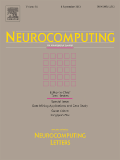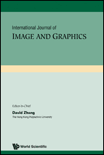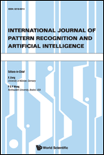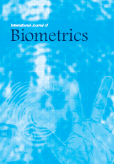
International Journal of Applied Pattern Recognition
Scope & Guideline
Empowering research at the intersection of technology and insight.
Introduction
Aims and Scopes
- Application of Machine Learning Techniques:
The journal frequently publishes research that utilizes machine learning algorithms, particularly in the fields of healthcare, automotive safety, and character recognition, showcasing the versatility of these methods in practical applications. - Image Processing and Analysis:
A significant portion of the journal's content revolves around image processing techniques, including contour analysis and feature extraction, which are essential for tasks such as facial recognition and medical imaging. - Health Informatics and Diagnostics:
There is a strong emphasis on the application of pattern recognition in healthcare, especially in early diagnosis and disease management, indicating a core area of research that merges technology with medical science. - Character Recognition and Verification:
The journal also explores advancements in character recognition technologies, both for handwritten and typewritten text, which is crucial for digital document processing and automated systems. - Survey and Review Articles:
The inclusion of comprehensive surveys and literature reviews highlights the journal's commitment to synthesizing existing knowledge in the field, aiding researchers and practitioners in identifying trends and gaps.
Trending and Emerging
- Deep Learning for Medical Applications:
There is an increasing trend towards the application of deep learning methodologies in medical diagnostics, particularly in analyzing MRI scans and ECG signals, highlighting the importance of AI in health management. - Automated Systems for Real-Time Analysis:
Emerging research on real-time applications, such as detecting phone usage while driving, indicates a growing interest in integrating pattern recognition with automated systems for enhancing safety and efficiency. - Interdisciplinary Approaches:
Research that crosses traditional boundaries, such as the application of pattern recognition in diverse fields like insurance fraud detection, suggests a trend towards interdisciplinary studies that leverage pattern recognition in various sectors. - Advanced Feature Extraction Techniques:
There is a notable rise in the exploration of innovative feature extraction methods, as evidenced by surveys on writer identification, which underscores the need for more sophisticated techniques in pattern recognition. - Emotion and Sentiment Analysis:
The trend towards using pattern recognition for emotion classification indicates a growing interest in understanding human emotions through technology, which has significant implications for fields such as marketing and user experience.
Declining or Waning
- Traditional Pattern Recognition Techniques:
Research focusing on conventional pattern recognition methods appears to be waning, as the field increasingly shifts towards more advanced machine learning and deep learning approaches. - Basic Image Processing without Advanced Algorithms:
There is a noticeable decline in studies that rely solely on basic image processing techniques without the integration of sophisticated algorithms, suggesting a movement towards more complex methodologies. - General Surveys without Specific Applications:
While surveys are still published, there seems to be less focus on general surveys that do not target specific applications, indicating a trend towards more applied and targeted research.
Similar Journals

EURASIP Journal on Image and Video Processing
Advancing the Frontiers of Visual InnovationEURASIP Journal on Image and Video Processing, published by Springer, is a leading open-access journal dedicated to the dissemination of significant advancements in the field of image and video processing. Since its inception in 2007, the journal has been pivotal in bridging the gap between theoretical research and practical applications, serving a diverse audience of researchers, professionals, and students. With an impressive impact factor reflected in its 2023 Scopus rankings—ranking Q2 in Electrical and Electronic Engineering, Information Systems, and Signal Processing—this journal showcases innovative methodologies, applications, and technologies in the realm of image and video processing. Authors benefit from the journal's open-access model, promoting widespread visibility and accessibility of their work. Located in the heart of New York City, the journal continues to evolve, covering converged years from 2007 to 2024, ensuring it remains at the forefront of research in a rapidly changing technological landscape.

JOURNAL OF CLASSIFICATION
Advancing Classification: Bridging Disciplines and InnovationsJOURNAL OF CLASSIFICATION, published by Springer, stands as a premier academic platform dedicated to the advancement of classification methodologies across various disciplines. With an ISSN of 0176-4268 and E-ISSN of 1432-1343, this esteemed journal has been pivotal since its inception in 1984, showcasing influential research that continues to shape the fields of Library and Information Sciences, Mathematics, Psychology, and Statistics. As reflected in its 2023 quartile rankings—Q2 in Library and Information Sciences, Mathematics (miscellaneous), and Psychology (miscellaneous), as well as Q3 in Statistics, Probability and Uncertainty—the journal is recognized for its high standard of scholarly contributions. Notably, its Scopus rankings highlight its significant impact, particularly in Mathematics (ranked #12/90) and Psychology (ranked #21/97), placing it among the elite publications in these fields. Although not an open access journal, it provides invaluable insights for researchers, professionals, and students seeking to deepen their understanding of classification theory and its practical applications. With convergence expected through 2024, the journal is well-positioned to further contribute to interdisciplinary discussions and innovations, solidifying its importance within the academic community.

Machine Intelligence Research
Driving Knowledge Forward in Machine IntelligenceMachine Intelligence Research is a premier academic journal published by SPRINGERNATURE, dedicated to advancing knowledge in the rapidly evolving fields of Artificial Intelligence, Applied Mathematics, and more. With its ISSN 2731-538X and E-ISSN 2731-5398, the journal is recognized for its impact, holding a distinguished position in various Q1 categories for 2023, including Computer Vision and Pattern Recognition and Control and Systems Engineering. Operating under an Open Access model, it ensures that groundbreaking research from China and around the world remains accessible to a global audience, promoting collaboration and innovation. As a beacon for researchers, professionals, and students, Machine Intelligence Research aims to disseminate high-quality research findings, innovative methodologies, and influential theories, thereby shaping the future landscapes of science and technology.

NEUROCOMPUTING
Transforming Insights into Intelligent SolutionsNEUROCOMPUTING is a premier academic journal published by ELSEVIER, specializing in the interdisciplinary fields of Artificial Intelligence, Cognitive Neuroscience, and Computer Science Applications. With an impressive impact factor and a Q1 ranking in its relevant categories for 2023, NEUROCOMPUTING is recognized as a leader in fostering innovative research and providing a platform for ground-breaking studies. The journal’s scope covers the convergence of neural computation and artificial intelligence, making it essential reading for researchers and professionals seeking to explore the latest advancements and applications in these dynamic fields. For those interested in the cutting-edge intersection of neuroscience and computational techniques, NEUROCOMPUTING offers a wealth of knowledge that significantly contributes to both theoretical and practical advancements. The journal is dedicated to publishing high-quality, peer-reviewed articles and is an invaluable resource for students and established scholars alike, looking to stay at the forefront of research trends.

International Journal of Image and Graphics
Pioneering Research in Image Processing and GraphicsInternational Journal of Image and Graphics, published by World Scientific Publishing Co. Pte Ltd, serves as an essential platform for scholars and practitioners in the realms of Computer Graphics, Computer-Aided Design, and Computer Vision and Pattern Recognition. Established in 2001 and based in Singapore, this journal has become increasingly influential, with a reputation reflected in its Q3 and Q4 rankings across key categories in Scopus, highlighting its growing impact in the academic community. Open access options remain limited; however, the journal's commitment to disseminating high-quality research allows for a rich exchange of ideas among professionals and students alike. As the 2023 metrics indicate, contributions to the journal not only enhance individual academic portfolios but also promote advancements in image processing, fostering innovation and growth within the discipline until at least 2024. It is thus a vital resource for anyone looking to deepen their knowledge and understanding of contemporary trends and technologies in image processing and related fields.

Computational Visual Media
Revolutionizing the intersection of technology and creativity.Computational Visual Media, published by TSINGHUA UNIVERSITY PRESS, is a premier open access journal dedicated to advancing the fields of Artificial Intelligence, Computer Graphics and Computer-Aided Design, and Computer Vision and Pattern Recognition. Since its inception in 2015, it has established a robust position within the academic community, consistently achieving Q1 rankings across its categories as of 2023. With exceptional Scopus rankings, including a remarkable percentile standing in the top 10% globally, the journal serves as a vital resource for researchers, professionals, and students eager to explore cutting-edge methodologies and technologies in computational visual media. The journal’s open access format enhances accessibility, fostering global collaboration and dissemination of knowledge, making it an indispensable platform for those at the forefront of innovation in these dynamic fields. The journal is headquartered in Beijing, China, and aims to publish high-quality research that not only contributes to theoretical advancements but also addresses practical challenges within computational visual technologies.

INTERNATIONAL JOURNAL OF PATTERN RECOGNITION AND ARTIFICIAL INTELLIGENCE
Pioneering the Future of Pattern Recognition and AIINTERNATIONAL JOURNAL OF PATTERN RECOGNITION AND ARTIFICIAL INTELLIGENCE, published by WORLD SCIENTIFIC PUBL CO PTE LTD, is a prestigious academic journal established in 1995 that serves as a critical platform for disseminating innovative research in the rapidly evolving fields of artificial intelligence, pattern recognition, and computer vision. With a focus on advancing theoretical and applied methodologies, the journal aims to bridge the gap between research and practical applications, making it essential reading for researchers, professionals, and students alike. The journal holds strong rankings within its categories, placing it in the Q4 for Artificial Intelligence, Q3 for Computer Vision and Pattern Recognition, and Q3 for Software as of 2023. Despite its growing influence, it continues to provide a rich resource for studies at the intersection of machine learning and computer science. The INTERNATIONAL JOURNAL OF PATTERN RECOGNITION AND ARTIFICIAL INTELLIGENCE not only contributes to academic discourse but also acts as a catalyst for technological advancement, making a significant impact on the scientific community.

International Journal of Biometrics
Empowering Research in the Evolving World of BiometricsInternational Journal of Biometrics is a distinguished platform dedicated to advancing research in the multifaceted areas of biometrics and its applications across various disciplines. Published by InderScience Enterprises Ltd in the United Kingdom, this journal serves as a vital resource for researchers, professionals, and students involved in applied mathematics, computer science, and electrical engineering. With an ISSN of 1755-8301 and an E-ISSN of 1755-831X, the journal provides a curated collection of innovative studies and reviews that contribute to understanding and improving biometric technologies. As of 2023, it holds a Q4 ranking across several relevant categories, reflecting its commitment to fostering knowledge in an emerging field. Though currently non-open access, it remains accessible to academic institutions and professionals, aiming to bridge gaps in biometrics research and practice. The journal covers a wide scope of topics, notifying readers about essential developments in image processing, pattern recognition, and electronic engineering applications, making it an indispensable resource for anyone interested in the dynamic field of biometrics.

Acta Universitatis Sapientiae Informatica
Fostering Knowledge in Informatics and BeyondActa Universitatis Sapientiae Informatica, published by SCIENDO, is an esteemed open-access journal in the field of computer science and informatics. Since its transition to open access in 2013, the journal has fostered an inclusive academic environment that allows researchers, professionals, and students to freely access cutting-edge research and innovations. With its ISSN 1844-6086 and E-ISSN 2066-7760, Acta Universitatis Sapientiae Informatica aims to disseminate high-quality scholarly articles that cover a broad scope of topics ranging from theoretical foundations to practical applications in informatics. Located in Warsaw, Poland, the journal serves as an essential platform for advancing the discourse in computer science, thus playing a critical role in both regional and international research communities.

Journal of Real-Time Image Processing
Innovating Solutions for Instantaneous Image AnalysisJournal of Real-Time Image Processing, published by SPRINGER HEIDELBERG, is a renowned peer-reviewed journal dedicated to the field of real-time image processing. With an ISSN of 1861-8200 and an E-ISSN of 1861-8219, this journal operates under a rigorous academic framework, ensuring high-quality publications that cater to both theoretical and practical advancements in the discipline. Since its inception in 2006, it has continually evolved, maintaining a Q2 ranking in Information Systems according to the 2023 Category Quartiles. This journal ranks #103 out of 394 in Scopus for Computer Science - Information Systems, positioning it within the top 27% percentile, which underscores its significance in the research community. Its focus on the intersection of image processing and real-time applications makes it a vital resource for researchers, professionals, and students eager to explore and contribute to cutting-edge developments in the field. Though it does not currently offer open access, the journal's comprehensive scope and commitment to disseminating impactful research make it an essential platform for advancing knowledge in real-time image processing.